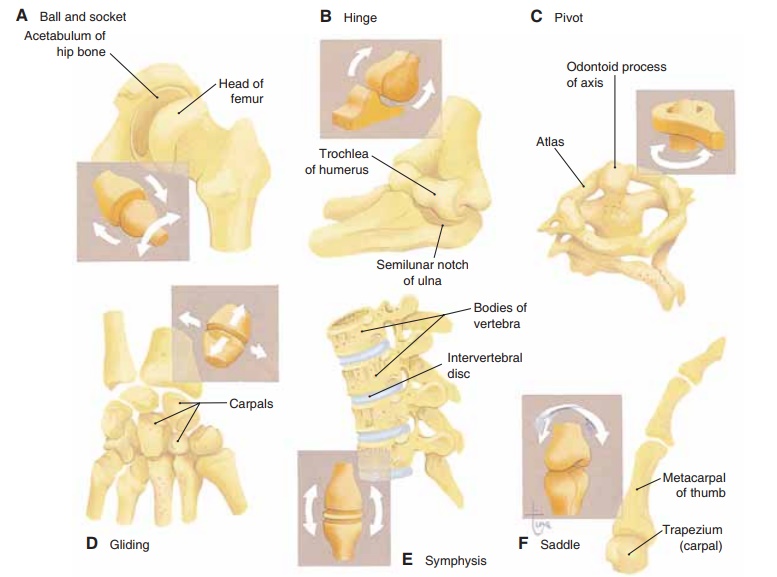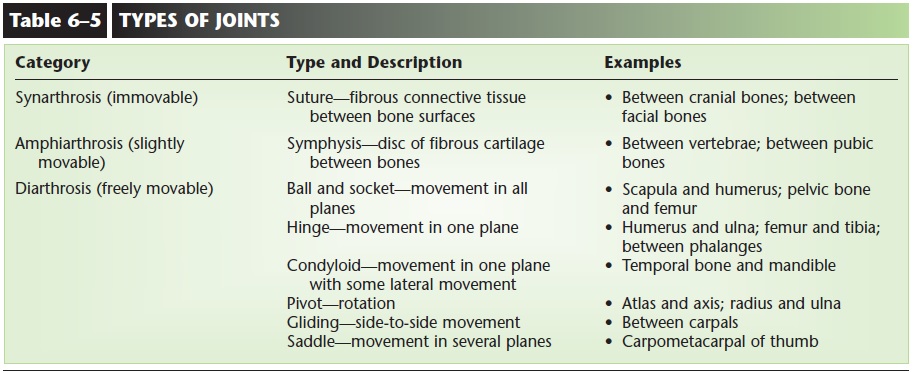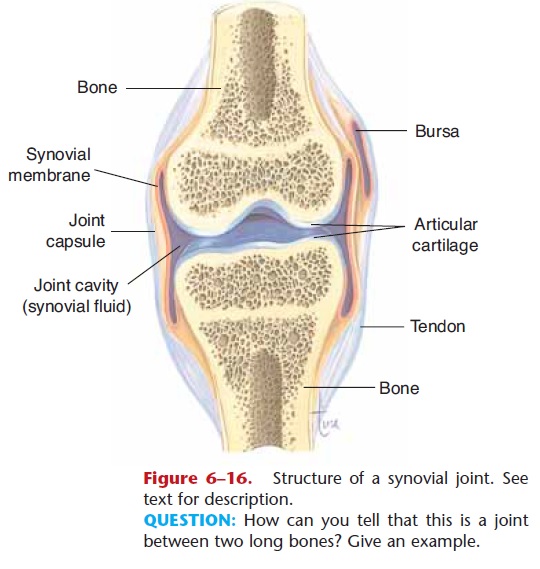Chapter: Essentials of Anatomy and Physiology: The Skeletal System
Joints-Articulations

JOINTS-ARTICULATIONS
A joint is where two bones meet, or articulate.
THE CLASSIFICATION OF JOINTS
The classification of joints is based on the amount of movement possible. A synarthrosis is an immovable joint, such as a suture between two cranial bones. An amphiarthrosis is a slightly movable joint, such as the symphysis joint between adjacent vertebrae. A diarthrosis is a freely movable joint. This is the largest category of joints and includes the ball-and-socket joint, the pivot, hinge, and others. Examples of each type of joint are described in Table 6–5, and many of these are illustrated in Fig. 6–15.


Figure 6–15. Types of joints. For each type, a specific joint is depicted, and a simple diagram shows the position of the joint surfaces. (A) Ball and socket. (B) Hinge. (C) Pivot. (D) Gliding. (E) Symphysis. (F) Saddle.
QUESTION: Which of these types of joints is most movable? Which is least movable?
SYNOVIAL JOINTS
All diarthroses, or freely movable joints, are synovial joints because they share similarities of structure. A typical synovial joint is shown in Fig. 6–16. On the joint surface of each bone is the articular cartilage, which provides a smooth surface. The joint capsule, made of fibrous connective tissue, encloses the joint in a strong sheath, like a sleeve. Lining the joint capsule is the synovial membrane, which secretes synovial fluid into the joint cavity. Synovial fluid is thick and slippery and prevents friction as the bones move.

Figure 6–16. Structure of a synovial joint. See Articular text for description.
Many synovial joints also have bursae (or bursas), which are small sacs of synovial fluid between the joint and the tendons that cross over the joint. Bursae per-mit the tendons to slide easily as the bones are moved. If a joint is used excessively, the bursae may become inflamed and painful; this condition is called bursitis.
Related Topics